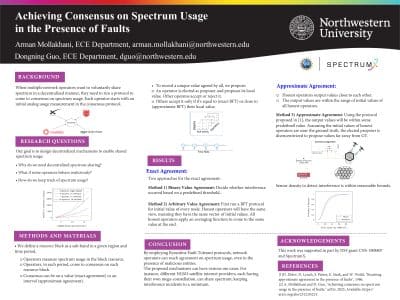Authors
Ting Zhu, Zicheng Chi
Abstract
The number of heterogeneous Internet of Things (IoT) devices will increase exponentially. To realize a fully unattended fashion for these IoT devices, ambient backscatter has recently emerged as a powerful solution to spectrum-efficient and energy-efficient IoT communications. Due to different requirements on cost, data-rate, communication-range, and energy consumption, these IoT devices use heterogeneous wireless communication radios and protocols. Therefore, researches have proposed different backscatter techniques to reflect the signals from wireless signals (e.g., WiFi, ZigBee, LoRa). However, most of existing backscatter systems only reflect one specific signal, which does not fully utilize the available spectrum in other frequency bands. Therefore, it significantly hampered the potential operating locations and applications of the backscatter systems. In this project, we propose to create a frequency agnostic backscatter system that can operate across different protocols and frequency bands (e.g., LoRa, LTE, ZigBee, WiFi, and etc.). Therefore, our proposed system can effectively utilize available spectrum and coexist with other radios within the same frequency bands. Our proposed system has the potential to operate universally in different locations and support various applications. This proposal outlines a challenging and integrated research plan to develop, prototype, and evaluate a cross-layer backscatter communication architecture for spectrum-efficient and energy-efficient communications that involve coexisting active, semi-passive and passive IoT systems. The proposed research, if successful, can be a catalyst for developing and deploying new applications, thus having a potentially enormous impact on the U.S. economy by fostering job growth related to IoT- based applications, such as smart health, smart buildings, and smart manufacture. The proposed research will also enrich the scientific knowledge of Internet-of-Things, wireless communications and networking, and mobile computing. The broader impact of this work shall be amplified by (i) improving course development and student training; (ii) facilitating international dissemination of research findings; (iii) fostering interdisciplinary collaborations; and (iv) leading technology-enhanced educational activities. We also proposed extensive broader participation in computing plan to raise interest in technology among K-12 students and other underrepresented minority groups. In addition, the investigators aim to enhance undergraduate research experience through senior design projects and Research Experiences for Undergraduates (REU) supplements.

